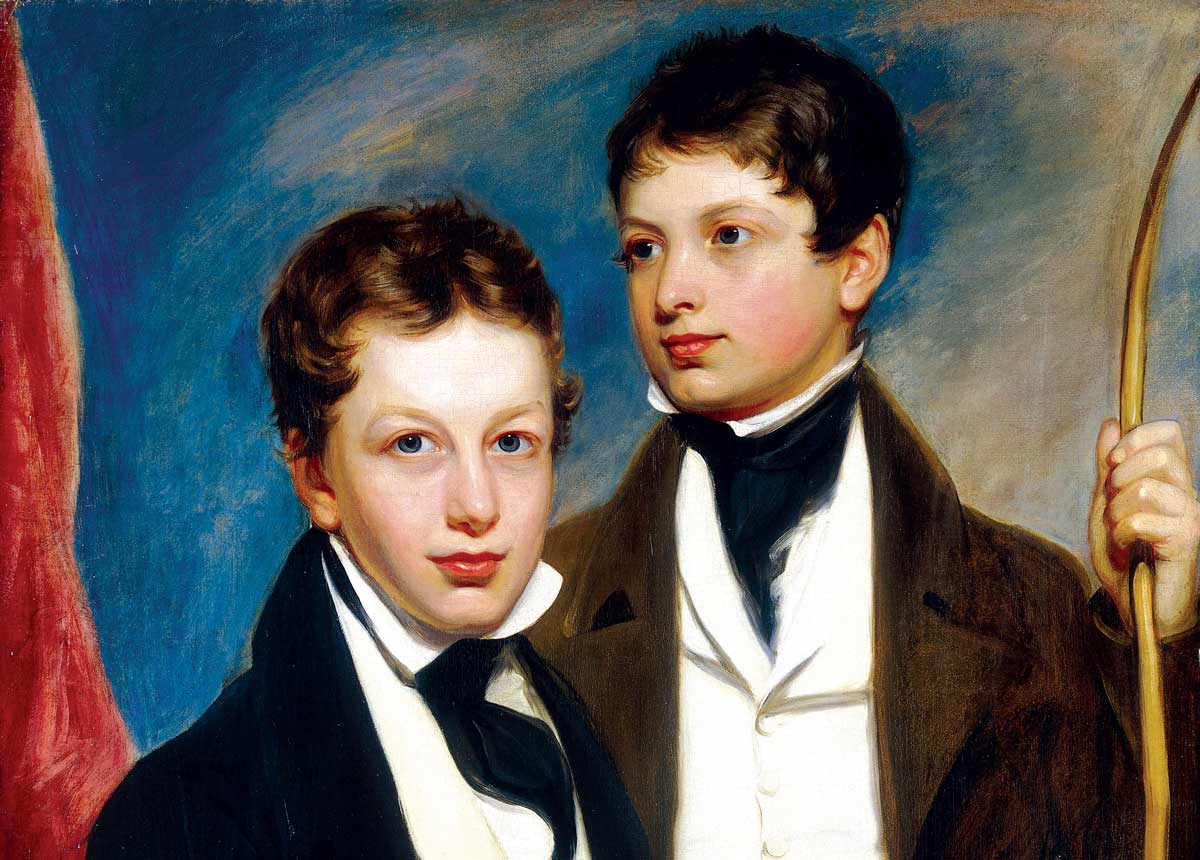‘Gentlemen of Uncertain Fortune’ by Rory Muir review
How, in Jane Austen’s England, sons without a fortune tried to find one.

It is a truth universally acknowledged that a younger son in possession of no fortune must be in want of a job, so Jane Austen might have written.
This book is a fascinating study of the effects of the British tradition of primogeniture on Regency society, which ruled that the eldest son bagged the inheritance, often consigning his brothers to downward mobility. What did that mean in practice for younger sons from genteel and aristocratic backgrounds, whose chances of continuing to live in the style to which they had grown up accustomed were dependent upon their employment prospects?
In this humane and carefully researched book, rich in individual stories, Rory Muir explores the various career paths on offer to such gentlemen, which weren’t that many if they wanted to maintain caste. The church, chosen by Jane Austen’s Edward Ferrars in Sense and Sensibility, was the steadiest, but not usually regarded as a career for the most ambitious. Requiring a university degree, and a level of patronage at the outset, it could become a springboard for intellectual and literary distinction, as in the case of the redoubtable Sydney Smith. But without luck or connections, a failed curate could end up denuded of rank.
The law was riskier and required more graft and brains, but the financial rewards at the top were far greater. In Austen’s Emma, Mr Knightley’s younger brother, a successful barrister, is as much of a workaholic as any top-flight QC today. Medicine did not have quite the social and professional status that we now associate with it: an aristocratic younger son might become a clergyman or a lawyer, but is unlikely to have trained as a doctor, though a country clergyman’s son would not have regarded it as beneath him. Banking and commerce remained a little iffy, as money derived that way lacked the prestige of landed wealth, but gentlemen entered the finance sector nonetheless. Muir offers an insightful portrait of Jane Austen’s banker brother Henry, who was ruined following the 1816 crash and then reinvented himself as a clergyman.
For the young men themselves, however, the most glamorous options, especially during the Napoleonic Wars, were the navy and army. The former required leaving home at a very young age, about 12, though it was not all ‘rum, sodomy and the lash’, according to Muir, who takes a measured line when it comes to the impact on child mental health. Another option for the adventurous was India, but the toll from disease was such that one wonders why so many parents sent their sons out there, especially once the heyday of the rich nabobs was over.
One of Muir’s most surprising findings is the relative lack of resentment shown by younger sons. They tended to accept their lot as an eternal law of nature, even in a period which saw increasing individualism and democratisation. In fact, Tudor and Stuart younger sons had expressed more objection to the palpable unfairness of it all.
In families where the eldest inherited massive prestige and economic resources, a patronage dynamic usually subsisted (which might explain why younger sons kept their resentment in check). Sibling rivalry was more likely to show its face when a younger brother outshone the heir in seeming defiance of the natural order. Lord Mornington was not only the eldest but a golden boy, fêted at school and university, later serving as Governor General of India, Foreign Secretary and Lord Lieutenant of Ireland. But when his younger brother Arthur overtook him on the inside, he became consumed with jealousy. Few had to cope with being surpassed by a sibling as talented as the Duke of Wellington, but it was not necessarily easy to be the privileged firstborn.
The extent of that privilege, in terms of sheer economics, is indicated by the example of the 4th Earl of Aberdeen, who inherited an estate worth over £16,000 a year at the age of only 17. His five younger brothers and one sister each received a single payment of £2,000, which, prudently invested, would have only garnered an annual income of around £100, far less than even the most abstemious individual could subsist on if they were to retain any pretensions to gentility. The income of a gentleman of private means averaged £700.
Muir offers a clear-eyed, impeccably researched chapter on money, which analyses incomes and the cost of living. In a book which contributes so much, this is perhaps his greatest contribution. It will be profoundly useful in future to biographers and historians.
My only disappointment – and I could not praise this beautifully written book more highly – is that Muir doesn’t have a chapter on marriage as a career option for men (it was almost the only career option for women). I would have loved to have learned more about the extent to which younger sons calculatedly contemplated the prospect of hooking an heiress and about how that worked in practice in people’s actual lives.
Gentlemen of Uncertain Fortune: How Younger Sons Made Their Way in Jane Austen’s England
Rory Muir
Yale 384pp £25
Lucasta Miller is the author of L.E.L. The Lost Life and Scandalous Death of Letitia Elizabeth Landon, the Celebrated ‘Female Byron’ (Vintage, 2019).